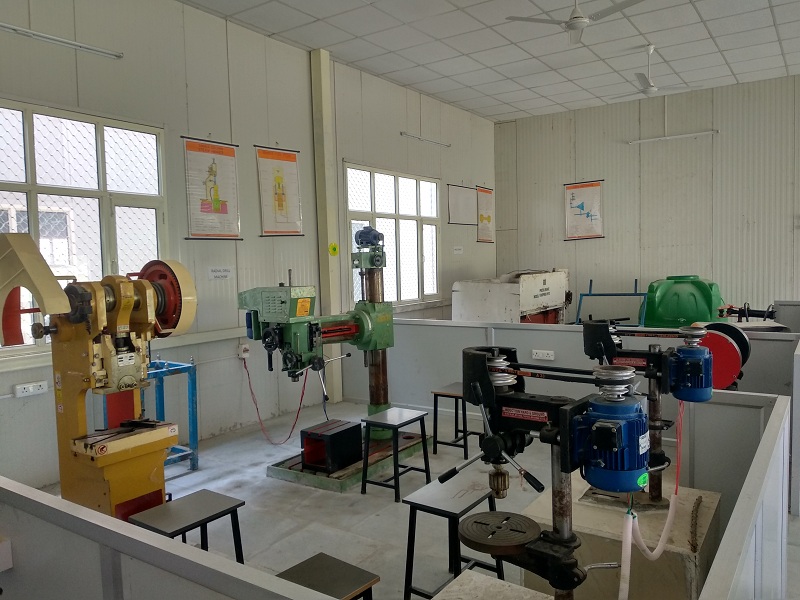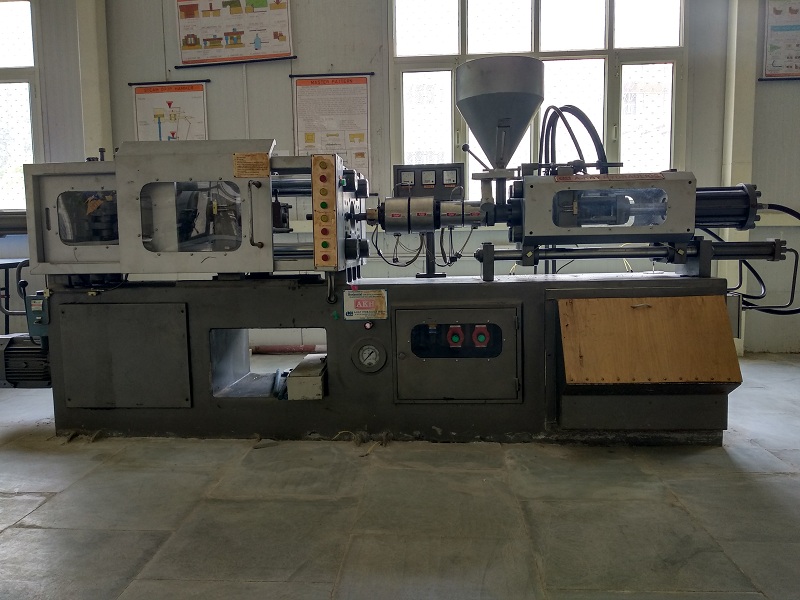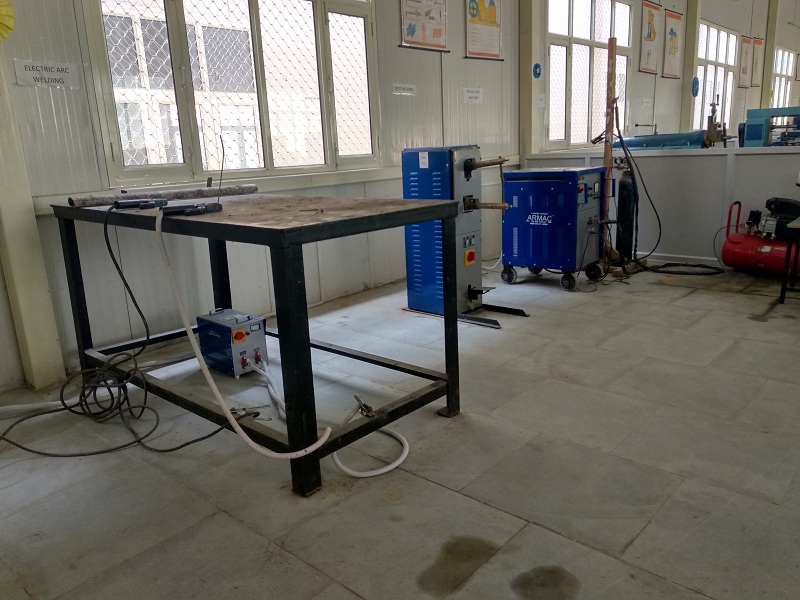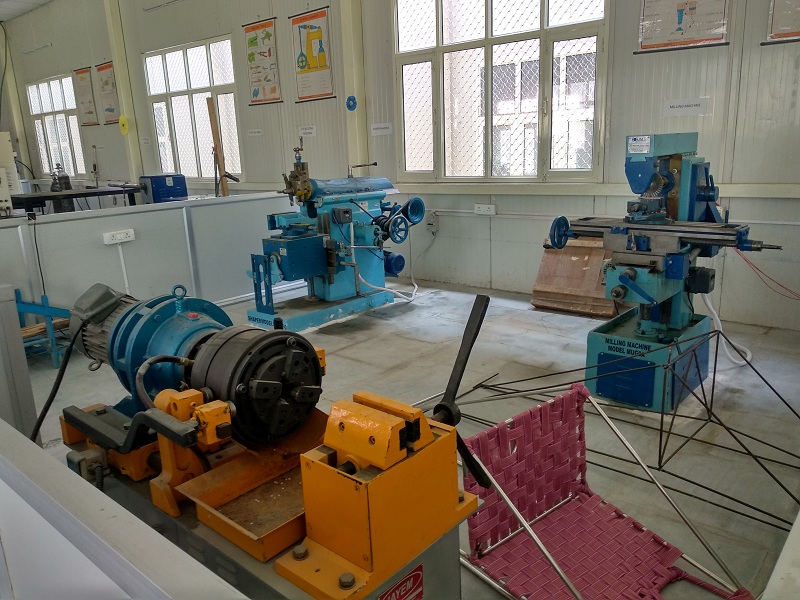Mechanical Engineering




- About Department
- Courses
- Labs
-
HOD & Faculty
- Syllabus
Among many engineering disciplines, Mechanical Engineering is the broadest, encompassing a wide variety of engineering fields and many specialties. The mechanical engineers are employed in an enormous range of technical areas including: acoustics, air-conditioning, automatic controls, computer-aided design, energy management, fluid dynamics, robotics, biomechanics and turbo machinery, just to name a few. Mechanical engineering is a challenging, rewarding and highly respected profession.
The department of Mechanical Engineering at IT Gopeshwar with its commitment to excellence educates the engineers of tomorrow by integrating classroom theory and practical hands-on projects, and also by emphasizing the process of learning and critical thinking by conducting industrial visits.
The teaching and research programs in the department are organized according to both disciplinary and inter-disciplinary themes. We cover all the core disciplinary areas of Mechanical Engineering including dynamics, controls, solid mechanics, materials, fluid mechanics, thermodynamics, automobile and design.
Core Subjects
Being affiliated to the Uttarakhand Tachnical University, The Mechanical Engineering department of the IT Gopeshwar follows the courses and syllabus prescribed by UTU which focus on and provide in-depth studies in the following main stream topics:.
Subject code | Subject | Semester | Year |
AHT-006 | Advanced Applied Mathematics | 3rd | 2nd |
AHT-007 | Technical Communication | 3rd | 2nd |
AHT-008 | Universal Human Values | 3rd | 2nd |
MET-002 | Engineering Thermodynamics | 3rd | 2nd |
MET-003 | Materials Engineering | 3rd | 2nd |
MET-004 | Fluid Mechanics & Fluid Machines | 3rd | 2nd |
Lab | |||
MEP-004 | Materials Engineering & Testing Lab | 3rd | 2nd |
MEP-005 | Fluid Mechanics & Fluid Machines Lab | 3rd | 2nd |
MEP-006 | Machine Drawing & Solid Modelling Lab | 3rd | 2nd |
MEP-007 | Internship-I/Mini Project | 3rd | 2nd |
CST-006 | Cyber Security | 3rd | 2nd |
CST-005 | Python Programming | 3rd | 2nd |
Subject code | Subject | Semester | Year |
|---|---|---|---|
AHT-008 | Universal Human Values | 4th | 2nd |
AHT-007 | Technical Communication | 4th | 2nd |
MET-005 | Mechanics of Machines | 4th | 2nd |
MET-006 | Applied Thermodynamics | 4th | 2nd |
MET-007 | Strength of Materials | 4th | 2nd |
MET-008 | Manufacturing Science and Technology -I | 4th | 2nd |
Lab | |||
MEP-008 | Applied Thermodynamics Lab | 4th | 2nd |
MEP-009 | Manufacturing Science and Technology -I Lab | 4th | 2nd |
MEP-010 | Mechanics of Machine Lab | 4th | 2nd |
CST-005 | Python Programming | 4th | 2nd |
CST-006 | Cyber Security | 4th | 2nd |
op | |||
MET-XXX | Departmental Elective – 1 | 5th | 3rd |
MET-XXX | Departmental Elective – 2 | 5th | 3rd |
Lab | |||
MEP-011 | Heat and Mass Transfer Lab | 5th | 3rd |
MEP-012 | Dynamics of Machines and Vibration Lab | 5th | 3rd |
MEP-013 | Manufacturing Science and Technology -II Lab | 5th | 3rd |
MEP-014 | Mini Project-II or Internship-II* | 5th | 3rd |
AHT-009 | Constitution of India | 5th | 3rd |
AHT-010 | Essence of Indian Traditional Knowledge | 5th | 3rd |
Open Elective | |||
MET-012 | Industrial Engineering & Management | 5th | 3rd |
MET-013 | Instrumentation & Control | 5th | 3rd |
MET-014 | Advanced Strength of Material | 5th | 3rd |
MET-015 | Advanced Fluid Mechanics | 5th | 3rd |
MET-016 | Advanced Engineering Materials | 5th | 3rd |
MET-017 | Internal Combustion Engines | 5th | 3rd |
MET-018 | Optimization Techniques in Engineering | 5th | 3rd |
MET-019 | Finite Element Method | 5th | 3rd |
MET-020 | Advanced Welding Technology | 5th | 3rd |
MET-021 | Process Planning & Cost Estimation | 5th | 3rd |
Subject code | Subject | Semester | Year |
MET-022 | Operation Research | 6th | 3rd |
MET-023 | Design of Machine Elements | 6th | 3rd |
MET-024 | Refrigeration & Air Conditioning | 6th | 3rd |
MEP-XXX | Departmental Elective – 3 | 6th | 3rd |
AHT-XXX | Open Elective-1 | 6th | 3rd |
MEP-015 | MATLAB Programming for Mechanical Engineers | 6th | 3rd |
Lab | |||
MEP-016 | Design of Machine ElementsLab | 6th | 3rd |
MEP-017 | Project Stage -I | 6th | 3rd |
Open Elective | |||
AHT-010 | Essence of Indian Traditional Knowledge | 6th | 3rd |
AHT-009 | Constitution of India | 6th | 3rd |
AHT-014 | Happiness and Well being | 6th | 3rd |
MET-025 | Experimental Stress Analysis | 6th | 3rd |
MET-026 | Machine Tool Design | 6th | 3rd |
MET-027 | Fuels and Combustion | 6th | 3rd |
MET-028 | Precision Engineering | 6th | 3rd |
MET-029 | Automobile Engineering | 6th | 3rd |
AHT-011 | Total Quality Management | 6th | 3rd |
AHT-012 | Managing e-Commerce & Digital Communication | 6th | 3rd |
AHT-013 | Industrial Safety and Hazards Management | 6th | 3rd |
Subject code | Subject | Semester | Year |
AHT-XXX | HSMC -1 / HSMC-2 | 7th | 4th |
MET-XXX | Departmental Elective-4 | 7th | 4th |
MET-XXX | Departmental Elective-5 | 7th | 4th |
Open Elective-2 | 7th | 4th | |
Lab | |||
MEP-018 | Project Seminar | 7th | 4th |
MEP-019 | Project Stage -II | 7th | 4th |
MEP-020 | Mini Project-III or Internship-III* | 7th | 4th |
Open Elective | |||
AHT-017 | Disaster Management | 7th | 4th |
AHT-018 | Innovations and Problem Solving | 7th | 4th |
MET-030 | Power Plant Engineering | 7th | 4th |
MET-031 | Mechanical Vibrations | 7th | 4th |
MET-032 | Automation in Engineering | 7th | 4th |
MET-033 | Design of Jigs Fixture and Press Tools | 7th | 4th |
MET-034 | Flexible Manufacturing System | 7th | 4th |
MET-035 | Robotics & Automation | 7th | 4th |
MET-036 | 3D Printing and Rapid Prototyping | 7th | 4th |
MET-037 | TQM & Reliability Engineering | 7th | 4th |
MET-038 | Viscous Flow Theory | 7th | 4th |
MET-039 | Computational Fluid Dynamics | 7th | 4th |
AHT-015 | Rural Development, Administration and Planning | 7th | 4th |
AHT-016 | Project Management & Entrepreneurship | 7th | 4th |
MET-046 | Reliability and Maintenance Engineering | 7th | 4th |
MET-047 | Project Management | 7th | 4th |
MET-048 | Six Sigma | 7th | 4th |
Subject code | Subject | Semester | Year |
AHT-XXX | HSMC-2 /HSMC-1 | 8th | 4th |
MET-XXX | Departmental Elective-6 | 8th | 4th |
Open Elective-3 | 8th | 4th | |
Open Elective-4 | 8th | 4th | |
Lab | |||
MEP-021 | Project Stage -III | 8th | 4th |
Open Elective | |||
MET-040 | Modelling & Simulation | 8th | 4th |
MET-041 | Unconventional Machining Processes | 8th | 4th |
MET-042 | Energy Efficient Buildings | 8th | 4th |
MET-043 | Modern Concept of Engineering Design | 8th | 4th |
MET-044 | New Product Design & Development | 8th | 4th |
MET-045 | Thermal Turbo machines | 8th | 4th |
MET-046 | Reliability and Maintenance Engineering | 8th | 4th |
MET-047 | Project Management | 8th | 4th |
MET-048 | Six Sigma | 8th | 4th |
AHT-015 | Rural Development, Administration and Planning | 8th | 4th |
AHT-016 | Project Management & Entrepreneurship | 8th | 4th |
Labs
- Applied Thermodynamics Lab
- Engineering Drawing Lab
- Fluid Mechanics Lab
- Fundamentals of Mechanical Engineering Lab
- Heat and Mass Transfer Lab
- Machine Drawing Lab
- Manufacturing Science Lab
- Material Science and Testing Lab
- Measurement and Metrology Lab
- Refrigeration and Air-Conditioning Lab
- Theory of Machine and Design Lab
- Workshop
- Automobile Lab
About
In this lab the students study and conduct experiments to understand the application of thermodynamics in real life. The students study various models and cut-sections of turbines and engines to understand the principles of thermodynamics used in their design and working.
List of Equipment
- Morse test apparatus
- Model of pure Reaction steam turbine, De- level turbine
- Model of steam engine
- Sectional working model of 2 stroke petrol engine
- Sectional working model of 4 stroke petrol engine
- Gas turbine model
- Sectional working model of 2 stroke Diesel engine
- Sectional working model of 4 stroke Diesel engine
- Refrigerator
- Cut section of actual I.C. engine (two stroke)
- Cut section of actual I.C. engine (four stroke)
- Model of vertical water tube boiler, loeffler boiler
- Model of steam/Reaction turbine(air turbine, velocity compounded)
- Model of steam/Reaction turbine(air turbine, pressure compounded)
- Demonstrator of ignition system of 4 cylinder petrol engine
List of Experiment
- To study pressure compounding of steam turbine
- To study impulse reaction turbine
- To study a two stroke petrol engine
- To study a four stroke petrol engine
- To study a water tube boiler.
- To study a fire tube boiler.
- To study four stroke diesel engine
- To study and sketch of simple steam engine model
- To study two stroke diesel engine.
About
In this lab the students learn about the various aspects of engineering drawing. This understanding is needed for communication between a component designer and manufacturer. All the required equipments are present in the lab for this purpose.
List of Equipment
- Drawing Boards
- Instruments Box
- Drawing Sheets
- Drawing pencil
- Drawing pins and clips
- Protractors
- Set squares
- T-square or Drafter
About
This laboratory houses testing equipment for Fluid Mechanics Laboratory and provides classroom space for students working on related laboratory activities. The equipment includes a centrifugal pump test rig, losses in pipe apparatus, reciprocating pump test rig and pipe friction apparatus.
List of Equipment
- Kaplan Turbine test rig
- Apparatus to study boundary layer profile over a flat plate
- Impact of jet on vanes Apparatus
- Apparatus to study transition from laminar to turbulent flow and to determine the lower critical Reynolds number
- Calibration Rig and to determine coefficient of discharge for rectangular and triangular notches
- Apparatus verify Darcy’s law and to find out coefficient for different sizes of pipe
- Calibration rig for measuring discharge through venturimeter& orifice meter
- To determine loss coefficients for various pipe fittings
- Apparatus for impact of jet
List of Experiment
- To verify the momentum equation using the experimental set upon diffusion of submerged air jet
- To determine the coefficient of discharge of an orifice of a given shape .Also to determine the coefficient of velocity and coefficient of contraction of the orifice mouthpiece.
- To calibrate a venturimeter and to study the variation of coefficient of discharge with the Reynolds number.
- To find the value of the coefficient of discharge for a given orifice meter and also the discharge through a given pipe by use of orifice meter.
- To study the boundary layer velocity profile over a flat plate and to determine the boundary layer thickness..
- To study the variation of friction factor for turbulent flow in commercial pipes
- To study the transition from laminar to turbulent flow and to determine the lower critical Reyonlds number.
About
In this lab the students learn about the fundamental principles of mechanical engineering and their applications by doing experiments as well studying the cut-sections and models.
List of Equipment
- Models of 2-stroke and 4-stroke IC engines
- Cut section of 4-stroke three cylinder engine(maruti 800)
- Vapour compression test ring
- Window type air conditioner
- Tensile testing machine(UTM)
- Compression testing machine
- Izod and charpy impact testing machine
- Flctcher’s Trolley apparatus
List of Experiment
- Study of the working of a 4-stroke petrol/diesel engine.
- Study of working of a 2-stroke petrol/diesel engine.
- Study of the main components comprising the petrol engine/diesel engine.
- Study of the construction details and working of a vapur compression refrigerator.
- Study of the constructional details and working of a window air-conditioner.
- Study of the constructional details and working of locomotive/Lancashire/Babcox steam boiler.
- To study the constructional and operational details of a simple steam engine.
- To study the constructional and operational details of a compound steam engine.
- To study the working of a steam turbine.
- To conduct tensile test on a mild steel specimen with the help of a universal testing machine and determine
- Ultimate strength
- Percentage elongation
- Percentage reduction
- To conduct compressive test on a given specimen and determine its ultimate compressive strength.
- To determine the hardness of the given metallic specimen by
- Brinell hardness test method
- Rockwell hardness test method
- To conduct the impact test and determine the impact strength of mild steel/aluminium specimen by Izod and Charpy method.
About
This laboratory houses testing equipment for Heat and Mass transfer Laboratory and provides classroom space for students working on related laboratory activities. The equipment includes a thermal conductivity of liquid, heat transfer in forced convection, boiling heat transfer unit, emissivity measuring apparatus, stefan boltzmann’s apparatus and heat transfer convection.
List of Equipment
- Thermal Conductivity of Metal bar
- Thermal conductivity of Liquids
- Stefan Boltzmann Apparatus
- Parallel Flow/ Counter Flow heat exchanger
- Heat transfer in force convection
- Heat transfer from pin fin
- Apparatus for Heat transfer in Natural Convection
- Heat transfer through composite wall
- Critical Heat flux Apparatus
- Heat pipe Demonstration
- Emissivity Measuring Apparatus
- Boiling heat transfer Unit
List of Experiment
- To find out the heat transfer coefficient to vertical cylinder in natural convection.
- To find surface heat transfer coefficient for a pipe flowing heat.
- To determine the thermal conductivity of a liquid.
- To study the temperature distribution along an extended surface of constant cross sectional area.
- To find the Stefan Constant.
- To determine total Thermal Conductivity of composite wall.
- To study the film wise and drop wise condensation of steam on a vertical surface.
- To Determine total thermal conductivity of composite cylinder.
About
It is an extension of the concepts learnt in the engineering drawing lab. In this lab the students make technical diagrams of various parts and their assembly on paper as well using computers.
List of Equipment
- Drawing Boards
- Instruments Box
- Drawing Sheets
- Drawing pencil
- Drawing pins and clips
- Protractors
- Set squares
- T-square or Drafter
List of Experiment
- Draw the front view, side view of the given drawings in first angle projection.
- Draw the exploded view of the given drawing in first angle projection.
- Draw the Assembly of the given drawing in first angle projection.
- Draw and determine the size of the given key when L=50mm. and study the different types of keys.
- Draw and study of different types of rivets.
- Draw the isometric view of given drawing in Auto-CAD.
About
The lab is equipped with various experiments involving in manufacturing processes, metal forming, casting metal removing and metal addition processes. The lab is equipped with state-of-art-machines like lathe, shaper, injection molding, CNC machines and impact testing machines.
List of Equipment
- Injection moulding m/c
- Bending machine for pipe
- Furnace for casting of ferrous –nonferrous melting furnace
- Ultrasonic plastic welding m/c
- Pedestal grinding m/c
- Centre lathe machine all gear
- CNC Trainer lathe m/c
- CNC Trainer milling m/c
- Electric discharge m/c
- Double body flywheel
- Spot and seam welding
- TIG Welding
List of Experiment
- Pattern Making
- Bending & spring back.
- Rolling-experiment.
- Wire drawing/extrusion on soft material.
- Forging hand forging processes
- Sand testing (at least one such as grain fineness number determination)
- Press work experiment such as blanking/piercing, washer, making etc.
- Jigs & Fixture experiment.
- Bolt making on lathe machine
- To make single V-butt joint for Arc welding
- Planning of surface and shaping a V-block on shaper M/c
- To perform gas welding operation
- To perform soldering & brazing exp. & study of brazing & soldering
- Study of tools and its angles
- Study of tool wear & plot a graph b/w tool life and tool wear
- Drilling holes on drilling m/c and study of drill
About
This laboratory houses testing equipment for material science Laboratory and provides classroom space for students working on related laboratory activities. The equipment includes a hardness testing machine, belt grinder, polishing machine and muffle furnace.
List of Equipment
- Dry and wet surfacer
- Metallographic specimen mounting press
- Specimen Leveler
- Dry and wet belt surfacer
- Metallographic Reference chart
- Heat treatment furnace with wool insulation$ digital controller
- Binocular Metallurgical Microscope
- Cut of wheels
- Dry Belt surface (single Belt)
- Single disc polishing Machine- Variable speed table type
- Two disc polishing Machine- Variable speed table type
- Computerized grain size measurement apparatus
- Vicker hardness Tester
- Hand grinder
- Metallurgical Microscope (monocular)
- Cut of wheel machine
- Dry and wet surfacer
List of Experiment
- Comparative studies of microstructure of different specimen (mild steel, cast iron, cu alloy- brass).
- To study heat treatment processes such as Annealing, Quenching, Normalizing and Case hardening .
- To study the 15 common materials, Tungsten, Stainless Steel, Zinc, Fibre, Thermacol, Coal, Hard Wood, Rubber, Cotton, Ceramic, Aluminium, Mild Steel, Paper, Pvc and Nylon.
- To study corrosion and its effect.
- Study of microstructure of welded components and HAZ-macro and micro examination
- To conduct tensile test on mild steel specimen and to find put the following quantities.
- Yield strength
- Young’s modulus of elasticity
- Ultimate strength
- Percentage reduction in area
- Percentage elongation
- To carry out shear test and bend test on UTM.
- Impact testing on impact testing machine like izod or charpy or both.
- To determine the hardness of given specimen on Rockwell/ Brinell /Vickers hardness tester.
- To conduct torsion test on mild steel or iron specimens to find out modulus of rigidity.
About
The lab is fully developed for experimentation and studies on vernier caliper Limits, Fits and Tolerances, Dial Indictor, Shark Plug, Tachometer, Sine Bar & Slip Gauges and Vibration Measuring Instrument to prepare the students befitting to serve the industry.
List of Equipment
- Sine bar (200mm)
- Granite surface plate (0.5*0.5m)
- Slip gauge
- Vernier height (size 300mm, Accuracy 0.02mm)
- Bore dial gauge(10-50) 0.001 accuracy
- Gear tooth vernier caliper
- Vernier height (size 300mm, Accuracy 0.02mm
- Angle plate
- Sine vice
- Outside micrometer
- Internal micrometer 25-100mm
- Internal micrometer 50-210mm
- Digital vernier caliper
- Digital micrometer(outside) 0-25
- Digital micrometer(outside) 25-50
- Depth micrometer
- Magnetic dialindicator stand
- Gear tooth vernier caliper
- Thread gauges plug/ring
- Feelers gauge
- v- block
List of Experiment
- To study the Principle, working & construction of Dial indicator.
- To study the feller gauge.
- To Study the pressure measurement device (Pressure Cell)
- Measurement of angle using Sine bar & Slip gauges.
- To measurement of strain through strain cantilever bridge.
- To study the working of stroboscope
- Study and angular measurement using bevel protector.
- Study and working of simple measuring instrument like vernier caliper, micrometer, tachometer, etc.
About
The aim of the lab is to give a practical insight to degree students for equipments running on Vapour compression cycle. Water cooler and cooling Tower apparatus has been designed for calculation of C.O.P. and Efficiency of the system. And cut section model of all types of compressors, Air conditioners and condensers are used to give thorough knowledge of their parts, working and maintenance.
List of Equipment
- Models of different type of evaporates
- Air condition
- Compressor test ring
- Cooling tower
- Refrigeration Test ring
- Air washer test ring
- Air conditioning system rig
- Mechanical heat pump
- Cold storage test ring
List of Experiment
- Experiment on refrigeration test rig and calculation of various performance parameters.
- To study different types of expansion devices used in refrigeration system
- To study different types of evaporators used in refrigeration systems.
- To study basic components of air-conditioning system.
- Experiment on air-conditioning test rig and calculation of various performance parameters.
- To study air washers.
- Study of Window air conditioner
- Study and determination of volumetric efficiency of a compressor
About
This laboratory houses testing equipment for Theory of machines, dynamics of machines and design Laboratory. The equipment includes a slip and creep measurement apparatus, kinematic pair, epicyclic gear apparatus, universal vibration testing apparatus, universal governor apparatus, and motorized gyroscope among others.
List of Equipment
- Cam analysis apparatus
- Universal Governor Apparatus
- Motorized Gyroscope
- Static and Dynamic Balancing Apparatus
- Universal vibrating testing apparatus
- Epicyclic Gear Apparatus
- Modalof different types of gear train
- Coriolis component of Acceleration
- Journal bearing apparatus
- Model for different types of mechanisms
- Strain rossetes apparatus
- Slip and Crip measurement
- Chart/models Orthographic projection
- Chart/models spark plug
- Whirling of shaft apparatus
- Chart/models chart assemblies drawing of connecting rods
- Chart /models screw jack
- Chart/models tool post
- Chart/models Gate valve
List of Experiment
DOM Experiments
- To verify the relation of simple pendulum
- To determine the radius of gyration k of a given compound pendulum and To verify the relation of compound pendulum
- To determine the radius of gyration of given by using Bi-Filar Suspension
- To study the longitudinal vibration of helical spring and to determine the frequency or period of vibration(oscillation) theoretically and actually by experiment.
- To study the effect of whirling of shaft
- To perform experiment on watt and Governor to prepare performance characteristic Curves, and to find stability & sensitivity.
- To perform experiment on Proell Governor to prepare performance characteristic Curves, and to find stability & sensitivity
- To study gyroscopic effects through models.
- To perform the experiment for Static & dynamic balancing on balancing machine
Machine Design Experiments
- To design a shaft.
- Design a welded joint.
- Design a spring .
- Design a screw jack.
- Design a key.
- Design a Bolted joint.
- Design a coupling.
About
A full-fledged workshop has been established. Individualized attention is given to all the students who come to the workshop. Safety gadgets have been made compulsory to be used by the students while they are in the workshop for their hands-on-practice. Lathe machines, Shaper machine, drilling machine, Gas welding and Arc welding set-ups are available in the Mechanical workshop.
List of Equipment
- Centre lathes
- Shaper
- Capistan lathe
- Power hacksaw
- Milling machine
- Drilling machine,13mm
- Power hacksaw
- Double ended pedestal grinder
- Anvils with anvil base (iron base)
- Vernierhight gauge
- Venire calipers
- Surface plate
- Hand drilling machine electric
- Wood working turning lathe
- Bandsaw machine
- Universal sawimg machine
- Carpenter’s work bench
- Hand drill machine
- Double ended pedestal grinder
- Arc welding M/C
- Spot welding
- Welding glass goggles
- Fitter work bench table
- Bench type drill
- Planer
- Tig welding machine
List of Experiment
- To fabricate the turning model on a lathe m/c as per the drawing.
- To fabricate a wooden T-Lap joint of given dimensions using common carpentry tools.
- To make the perfect male & female V – shape joint according to given drawing in fitting shop.
- To prepare a Single V- Butt Joint with the help of Electric Arc welding on mild steel flat.
- To make the box by sheet metal operation.
- To study of Tools /Equipment, operations used in carpentry shop and carpentry joints.
- To prepare a Lap – Joint by Arc Welding.
- To study of tools used and operations perform in black smith shop.
- To prepare job in black smithy shop involving drawing down mild steel bar from 30 to 20 mm.
About
This lab is well-equipped and enables students to understand the fundamentals of Automotive Engineering which includes basic structure, body style, Chassis of an automobile, synchromesh gear box, Hydraulic and Mechanical brake, Vehicle lighting system, Clutches. fuel supply system, automotive Transmission system and wheel & tire assembly.
List of Equipment
- Centre lathes
- Shaper
- Capistan lathe
- Power hacksaw
- Milling machine
- Drilling machine,13mm
- Power hacksaw
- Double ended pedestal grinder
- Anvils with anvil base (iron base)
- Vernierhight gauge
- Venire calipers
- Surface plate
- Hand drilling machine electric
- Wood working turning lathe
- Bandsaw machine
- Universal sawimg machine
- Carpenter’s work bench
- Hand drill machine
- Double ended pedestal grinder
- Arc welding M/C
- Spot welding
- Welding glass goggles
- Fitter work bench table
- Bench type drill
- Planer
- Tig welding machine
List of Experiment
- To fabricate the turning model on a lathe m/c as per the drawing.
- To fabricate a wooden T-Lap joint of given dimensions using common carpentry tools.
- To make the perfect male & female V – shape joint according to given drawing in fitting shop.
- To prepare a Single V- Butt Joint with the help of Electric Arc welding on mild steel flat.
- To make the box by sheet metal operation.
- To study of Tools /Equipment, operations used in carpentry shop and carpentry joints.
- To prepare a Lap – Joint by Arc Welding.
- To study of tools used and operations perform in black smith shop.
- To prepare job in black smithy shop involving drawing down mild steel bar from 30 to 20 mm.
List of Labs with Contact Details of Lab Incharges
| Sl. No. | Room No. | Name of Lab | Name of Lab Oic |
| 1 | B2-205 | Basic Mechanical Engineering Lab | Mr. Bhupendra Kumar |
| 2 | B2-110 | Material Science Lab | |
| 3 | CWS | Strength of Material Lab | Mr. Hemant Singh Chauhan |
| 4 | B2-105 | CAD Lab | |
| 5 | B2-201 | Heat and Mass Transfer Lab | Mr. Neeraj Gupta |
| 6 | B2-114 | Theory of Machine and Design Lab | Mr. Ravinder Singh Bora |
| 7 | B2-112 | Refrigeration and Air Conditioning Lab | Mr. Ravinder Singh Bora |
| 8 | B2-211 | Manufacturing Lab | Mr. ArunNegi |
| 9 | CWS | Workshop Lab | Mr. Dinesh Kr. Chauhan |
| 10 | CWS | Advanced Workshop Lab | |
| 11 | CWS | Fluid Mechanics and Machinery Lab | Mr. ArunNegi |
| B2-113 | Automobile Lab | Mr. Govind Singh Rawat |
HOD & Faculty
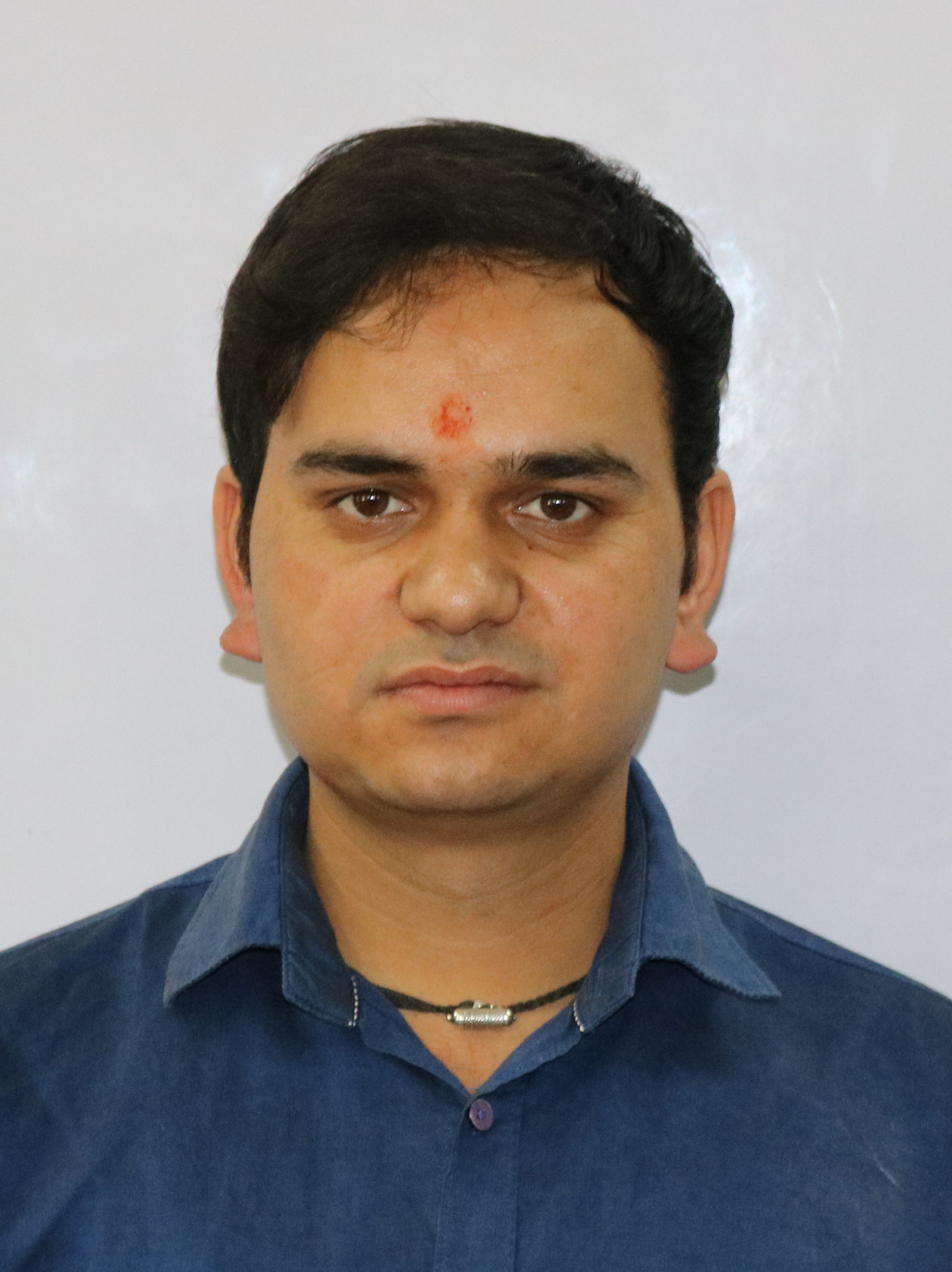
Arun Negi
arun.negi@itgopeshwar.ac.in
M.No.: 9675778443
Pursuing Ph.D. (UTU Dehradun)
Designation: HoD,Assistant Professor

Sandeep Kandwal
sandeep.kandwal@itgopeshwar.ac.in
M.No.: 8755329574
Pursuing Ph.D UIT
Designation: Assistant Professor
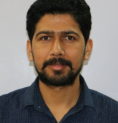
Hemant Chauhan
hemant.chauhan@itgopeshwar.ac.in
M.No.: 8126370888
M. Tech (GEU Dehradun)
Assistant Professor
Click here for syllabus
























